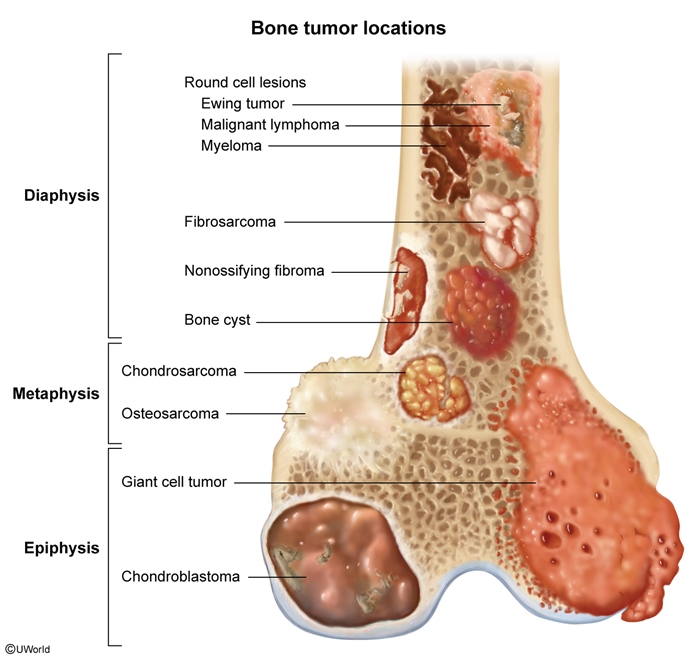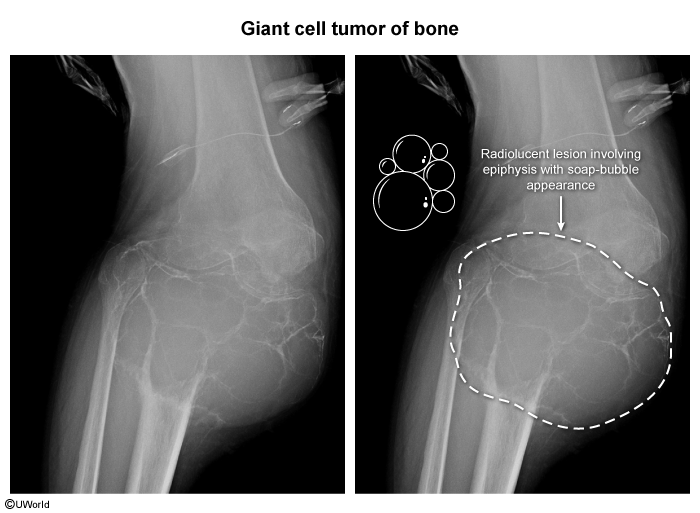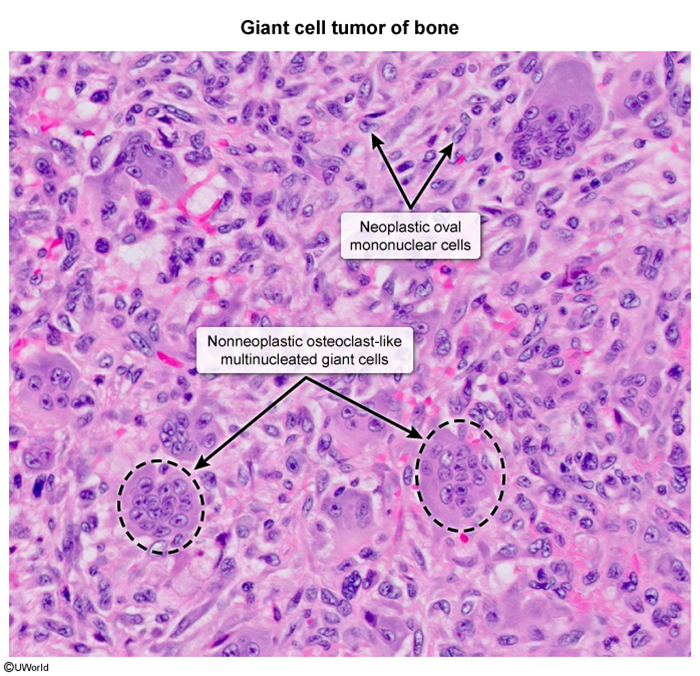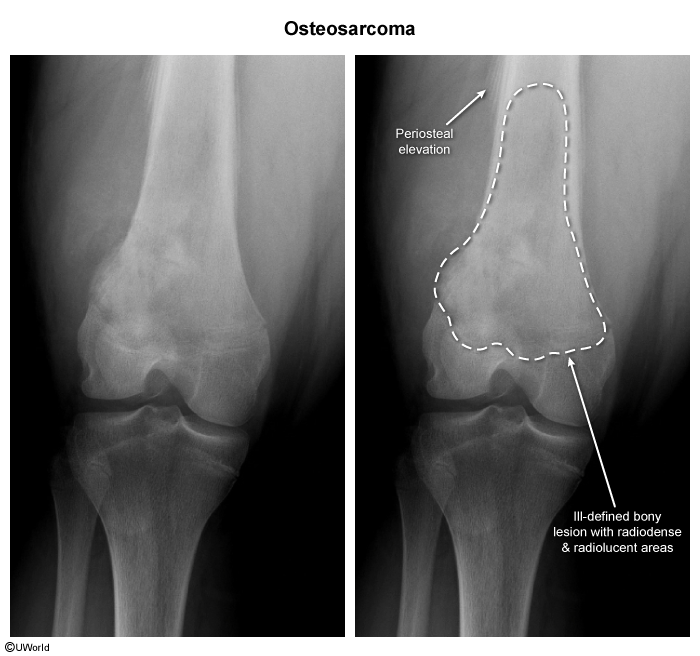Giant Cell Tumor
Article Sections
Introduction
Giant cell tumor of bone (GCTB), also known as osteoclastoma, is a benign but locally destructive neoplasm that arises from osteoclastic precursor cells. It most commonly affects the epiphyses of long bones in young adults (Figure 1).
Pathogenesis
GCTB is thought to develop from the activation of neoplastic stromal cells secondary to an intraluminal hemorrhage. These cells are involved in the recruitment and development of osteoclast-like multinucleated giant cells, whose increased activity leads to the characteristic bone resorption within the tumor.
Epidemiology
The incidence is highest in young adults (age 20-40) who have reached skeletal maturity, but it can also occur in older adults, typically associated with Paget disease of bone.
Clinical presentation
GCTB typically affects the epiphyses of long bones in young adults, with the distal femur and proximal tibia being the most common sites. Symptoms include local pain, swelling, and limited range of motion of the involved joint; pathologic fracture due to thinning and weakening of the local cortex may occur. Examination may reveal a soft tissue mass.
Continue Learning with UWorld
Get the full Giant Cell Tumor article plus rich visuals, real-world cases, and in-depth insights from medical experts, all available through the UWorld Medical Library.
Figures

Images


